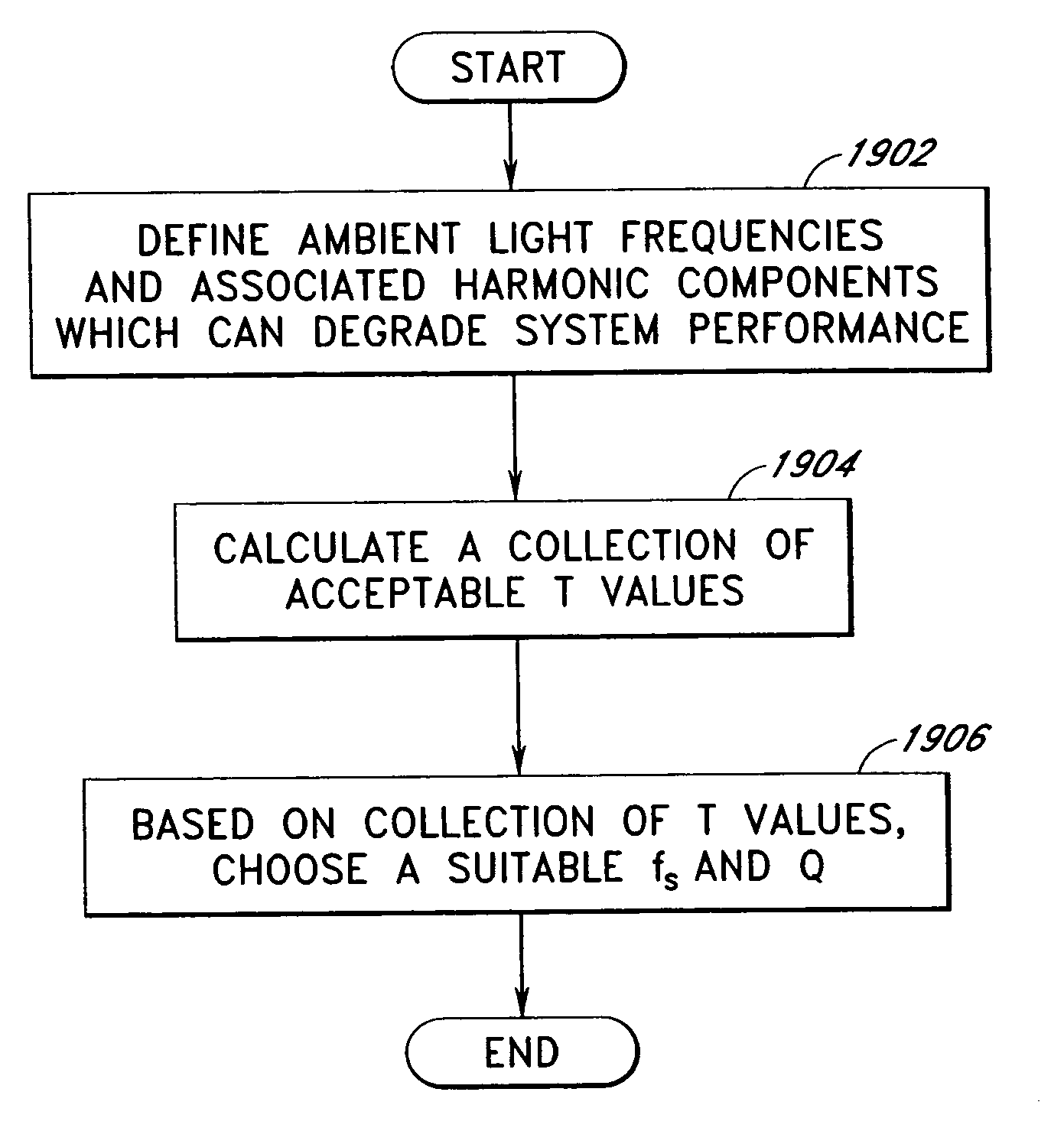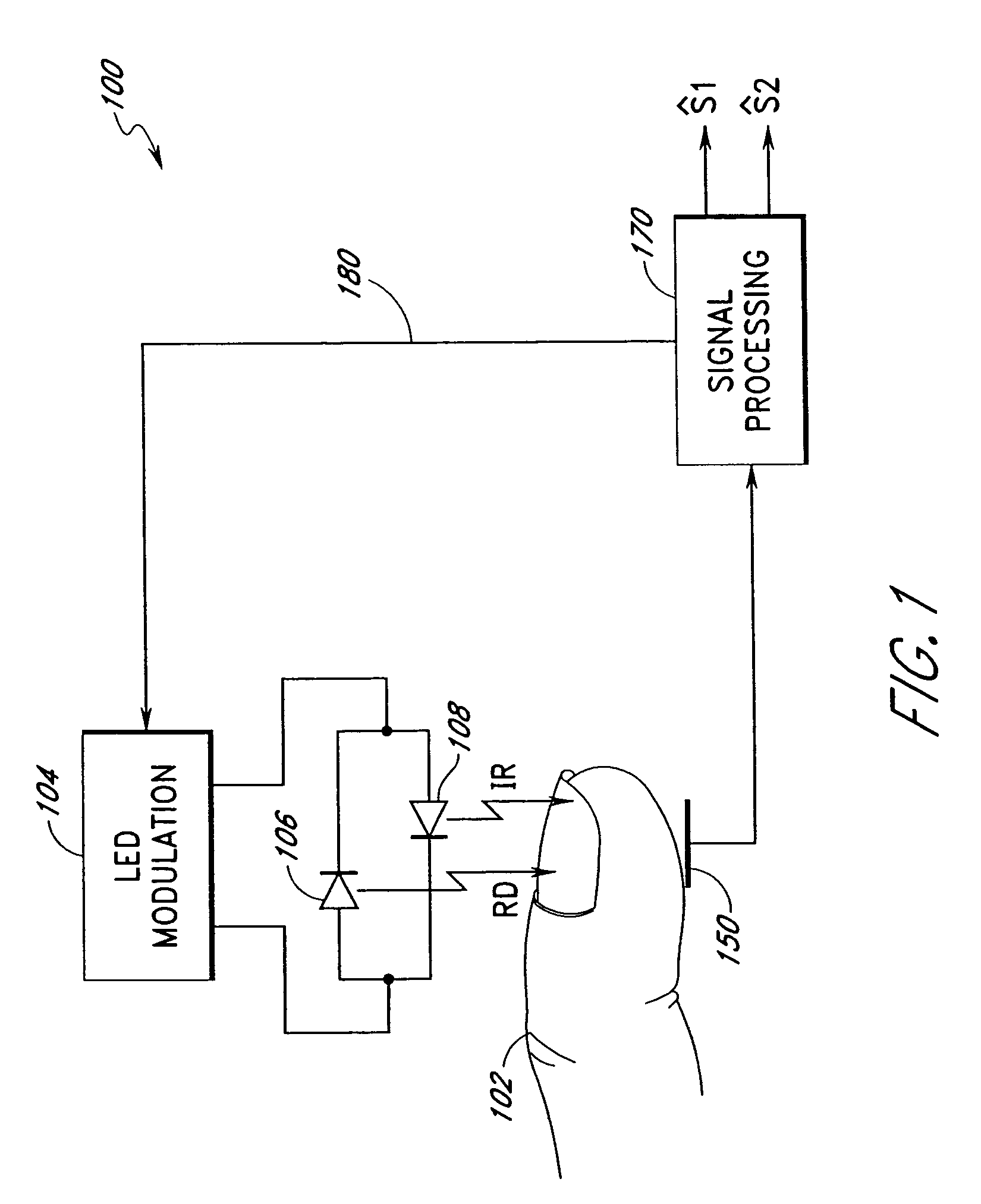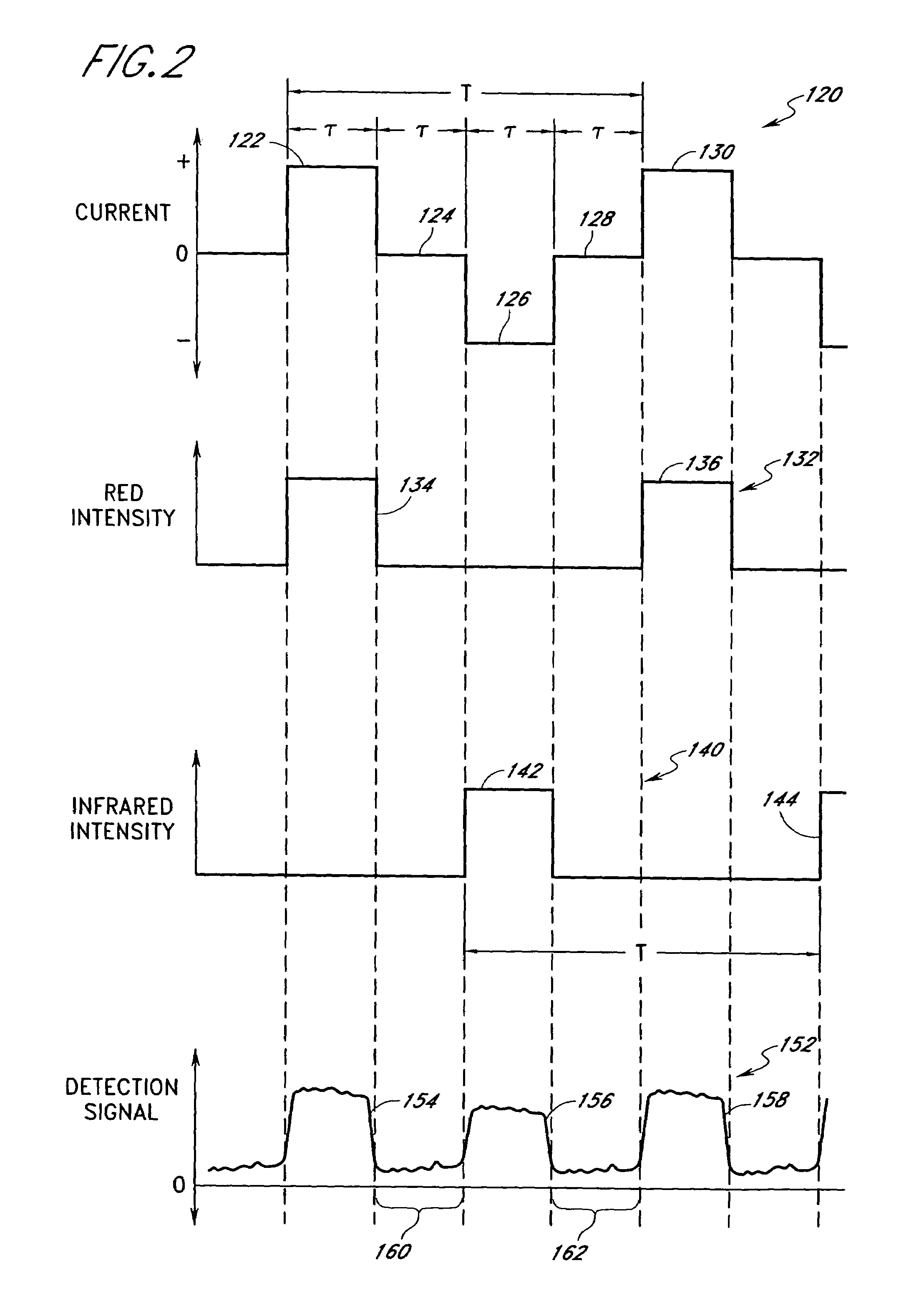Method and apparatus for demodulating signals in a pulse oximetry system
- Summary
- Abstract
- Description
- Claims
- Application Information
AI Technical Summary
Benefits of technology
Problems solved by technology
Method used
Image
Examples
Embodiment Construction
[0041]FIG. 1 illustrates an exemplary block diagram of a representation of a signal processing system 100 in accordance with the present invention used to determine blood oxygen saturation in a subject, such as, for example, a human subject. In the example presented, the measurements are performed on a portion of the subject, such as a finger 102 illustrated in FIG. 1. An LED modulation circuit 104 drives a pair of back-to-back light emitting diodes (LEDs) 106, 108 by applying a periodic signal to the two light emitting diodes 106, 108. The LED 106 is selected to emit electromagnetic energy in the red visible light range, and has a wavelength of, for example, approximately 660 nanometers. The LED 108 is selected to emit electromagnetic energy in the infrared range, and has a wavelength of, for example, approximately 905 nanometers. The LED modulation circuit 104 supplies current in alternating directions so that the two LEDs 106, 108 are activated one at a time. In particular, as il...
PUM
 Login to View More
Login to View More Abstract
Description
Claims
Application Information
 Login to View More
Login to View More - R&D
- Intellectual Property
- Life Sciences
- Materials
- Tech Scout
- Unparalleled Data Quality
- Higher Quality Content
- 60% Fewer Hallucinations
Browse by: Latest US Patents, China's latest patents, Technical Efficacy Thesaurus, Application Domain, Technology Topic, Popular Technical Reports.
© 2025 PatSnap. All rights reserved.Legal|Privacy policy|Modern Slavery Act Transparency Statement|Sitemap|About US| Contact US: help@patsnap.com



